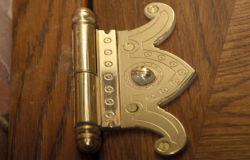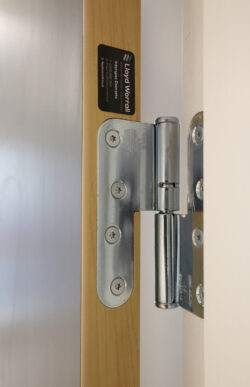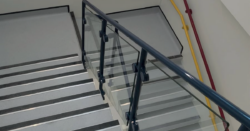The crucial role of architectural ironmongers in your project’s success
When embarking on a construction or renovation project, there are numerous aspects to consider, from architectural design and structural engineering to interior decor and landscaping.
Amongst these, the role of an architectural ironmonger is often overlooked, but their importance should not be underplayed. Involving an architectural ironmonger at the early stages of a project can be a game-changer – from ensuring compatibility of products and offering valuable guidance to providing technical expertise on product certification and building regulations.
In this blog post, we will explain why involving an architectural ironmonger from day one of a project is crucial for success.
Compatibility of products
One of the primary reasons to involve an architectural ironmonger at the early stages of a project is to ensure the compatibility of ironmongery products with the building’s design and intended use. The wrong choice of hardware can not only lead to mismatched aesthetics but also pose practical challenges in terms of functionality and security.
Architectural ironmongers, like Lloyd Worrall, have a deep understanding of various building components, materials, and architectural styles. They can assess plans and propose ironmongery solutions that seamlessly integrate with the overall design. This early collaboration helps prevent revisions down the line, saving both time and money.
Help, advice, and support in specification
Choosing the right ironmongery products is a complex task. Security, fire safety, accessibility, and durability must be considered. Without the expertise of an architectural ironmonger, architects, builders, and project managers may struggle to select the appropriate products and so make uninformed decisions.
Architectural ironmongers act as invaluable advisors in the specification process. They take into account the project’s specific needs, regulatory requirements, and the client’s preferences to suggest the most suitable hardware. Whether it’s recommending electro-magnetic fire-rated door closers for a commercial building or suggesting anti-ligature hardware for healthcare facilities, their insights lead to better choices and greater client satisfaction.
Technical advice on products
In addition to their knowledge of specifications, architectural ironmongers provide technical advice on the ironmongery products themselves. They are experienced in the intricacies of door locks, hinges, closing devices, access control and other components, and can guide stakeholders through the technical aspects of these products. This includes considerations such as materials, finishes, maintenance requirements and product certification.
Lloyd Worrall is a full member of the Guild of Architectural Ironmongers (GAI), so we have several team members who hold the GAI Diploma, providing our customers with peace of mind knowing that all specifications are being developed and checked by professionals.
Navigating building regulations
The construction industry is subject to a variety of building regulations and standards, from fire safety requirements to accessibility obligations. Compliance with these regulations is non-negotiable, ensuring the safety of the building’s occupants. However, understanding and keeping up to date with these regulations can be a daunting task.
Architectural ironmongers are highly knowledgeable in these regulations and requirements. They can help ensure that the ironmongery products specified for the project adhere to the necessary standards, avoiding potential legal and safety issues. For example, they can guide the selection of door hardware to ensure it meets all relevant performance standards including BS8300, ADM, BS EN, Certifire, UKCA and CE Mark, as well as advising on the buildings fire and escape ironmongery requirements.
Cost efficiency
While it may not seem obvious, involving an architectural ironmonger early in the project can lead to cost savings in the long run. Their expertise in product selection and specification helps prevent costly mistakes and revisions, as mentioned earlier. Also, with their extensive knowledge of the marketplace, they can source products competitively, helping to keep the project within budget.
How Lloyd Worrall gets involved early on
An example of our involvement early on in a project is the St Pancras project. The drawings for the ironmongery were compiled 6 1/2 years before the project began.
The architect of the St Pancras project stated: “We involved [them] early in the process and that was vital to the success of the scheme. [They] did not simply put in a price and wait for instruction. They were closely involved in the project, working hand-in-hand with the architectural team”.

Find out more about this project here.

Another example would be the Vintry & Mercer Hotel. Yannedis were brought onto the project during the design phase and were asked to produce ironmongery that would complement the historical influences in the design scheme.


Partner with Lloyd Worrall from day one
The involvement of an architectural ironmonger in the early stages of a construction or renovation project is not only beneficial but often essential. We can be that ironmonger, on hand to ensure the compatibility of products, offering help, advice, and support in specification, provide technical insights, and navigate building regulations.
From the moment we begin working together, we will support the design and site teams by ensuring we’re meeting and exceeding their client’s specification, fire certification and budget requirements.
Our goal is to provide solutions that promote a safe, secure and accessible environment.
If you’d like to speak to one of our experts about our ironmongery specification and scheduling services, or if you just need some advice or technical guidance, contact us on enquiries@lloydworrall.co.uk
Back To News





